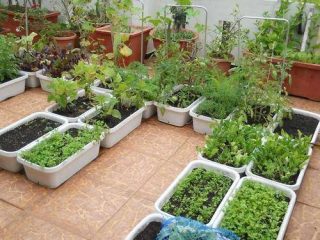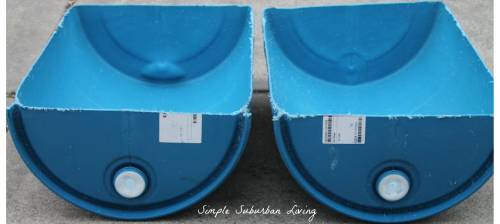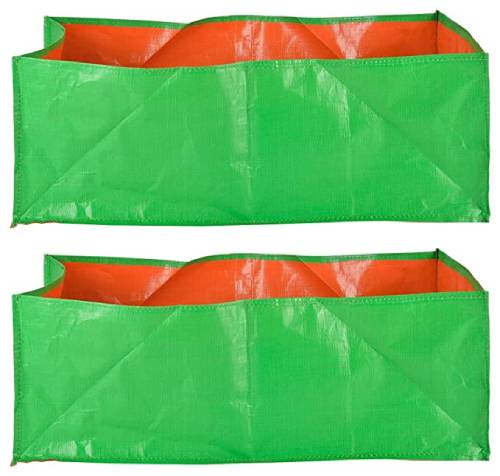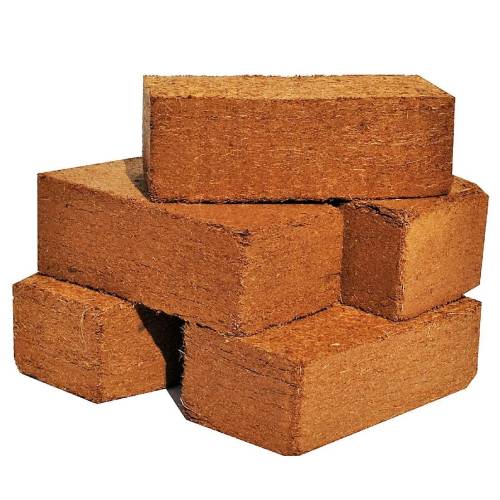‘Vegetable market is one of the essential parts of human life. Most people visit the market to for their regular supply of vegetables and fruits. However, many of us have experienced that fresh and good quality vegetables and fruits are usually not available in the market and even if they available, they are exhorbitantly priced. In such situation if someone advises that one can do farming at home and grow vegetables that are enough for our household needs, one may not believe in it. However, this is indeed possible. This does not require a farm or a courtyard, as space is not a criteria for this kind of farming. It can be done in your balcony, terrace or even in the window grill.

In the backdrop of the upcoming calamitous times, there is need to experiment in this aspect. As advised by Seers and Saints, the calamitous period has already begun and will intensify in the next 5 to 6 years. In such situation, no one can guarantee that the vegetables would be available in the market or we would be able to visit the market alike normal days ! Even during Corona pandemic, all of us have experienced the difficulties in getting vegetables and the inflated prices of various products in the market. In such case, why cannot we try to grow vegetables and fruits sufficient for our family at our home itself? Not only will we get fresh supply of vegetables but we will also be able to save money and efforts. Terrace gardening is a new concept which is a part of organic farming. In this article we will learn how to grow vegetables at home.

A. Which plants can be grown in terrace gardening ?
1. Leafy and kitchen vegetables
Red amaranthus, ambadi (Sorrel leaves), spinach, fenugreek, coriander, capsicum, chillies, brinjals, bitter gourd, snake gourd, bottle gourd, ladys fingers, cabbage, onions, potatoes, tomatoes, carrots, cucumber, beetroot, radish, hadga (Heti), drumstick, curry leaves, lime, sugarcane, mint, garlic and ginger.
2. Medicinal plants
Tulsi (Holy basil), aloe vera, adulsa (Vasaka), brahmi (Thyme-leaved gratiola), shatvari (Asparagus) and sabja (Basil seeds)
3. Fruit bearing plants
Orange, guava, lime, papaya, mango and fig
4. Flower bearing plants
Rose, marigold, lily, chameli (Jasmine), hibiscus, mogra etc
B. How to choose a pot ?
For terrace gardening one can use a pot or a container. As far as possible the pot should not be slim. If the circumference of the top of the pot is 12 inches then that of the bottom should be 10 inches. The brim of the pots should not be bent inwards. Shape of the pot should not be spherical. As far as possible use earthen pot. If unavailable then one can use a mud pot, tin or plastic container, plastic bucket, large plastic bag, plastic bottle, plastic drum (full or cut in half) or a wooden box. For terrace gardening one may also use ‘grow bags’ which are available in nurseries. These are available in the market too. When buying containers from the market ensure that they are in pastel colour to prevent them from absorbing heat.

Most of the plants grown in terrace gardening can grow in mud pots. Plants with short roots such as leafy vegetables can be grown in small pots. Tomatoes, radish and carrot should be grown in moderate sized pots. For bigger plants one should use bigger plastic or tin containers. Creepers can be grown on walls and pipes to make maximum use of available space.
C. Piercing holes to the pot or container

Pots or containers need openings for air ventilation. For an average sized pot (even for plastic containers) make 4 to 5 openings on the bottom and 10 to 12 on the sides, 4 to 5 inches apart. Grow bags are already provided with such openings.
D. How to get the pot ready for planting
There are several methods of filling a pot. Mud or a mixture of mud, coco peat soil (made from the pith inside a coconut husk) and manure or only compost made from wet kitchen waste and dried leaves etc. can be used as a substitute.
Soil with high carbon content does not require regular watering because its ability to retain water. Red soil has low mineral content and high water-draining capability as against black soil which has higher mineral content and low water draining capability. For terrace gardening, soil having high nutrients and water draining capability is needed.
When using black soil one should add a fistful of washed sand from the riverbank or construction site. When using red soil one should use coco peat (a natural microorganism free powder prepared from coconut husk through a certain process and available in brick form as well) as it is water retaining. If your home is close to the sea, then there is no need to use coco peat soil as the air in such localities have high humidity level. If coco peat is used, then due to excessive water retention the plants may die.
 Line the bottom of your pot with teased coconut husk. Insert dry sticks into them, vertically. Then spread a 1.5 to 2-inch layer of dried leaves, press and cover with soil till 2 inches from the top. Then plant the sapling and cover with a layer of dried leaves and pour some water.
Line the bottom of your pot with teased coconut husk. Insert dry sticks into them, vertically. Then spread a 1.5 to 2-inch layer of dried leaves, press and cover with soil till 2 inches from the top. Then plant the sapling and cover with a layer of dried leaves and pour some water.
Instead of just using soil, a mixture of soil, coco peat soil and manure can be used. Soak coco peat soil in water for 4 to 5 hours. Then press with both hands and drain off the water from it and mix it with soil. Fill the pot with such soil, cover with a layer of dry waste or dried neem leaves. Once the pot is filled with such layers plant the sapling or sow the seeds.

 Terrace gardening a lifeline for calamitous times (Part 2)
Terrace gardening a lifeline for calamitous times (Part 2)
Very useful information, well explained. Thanks